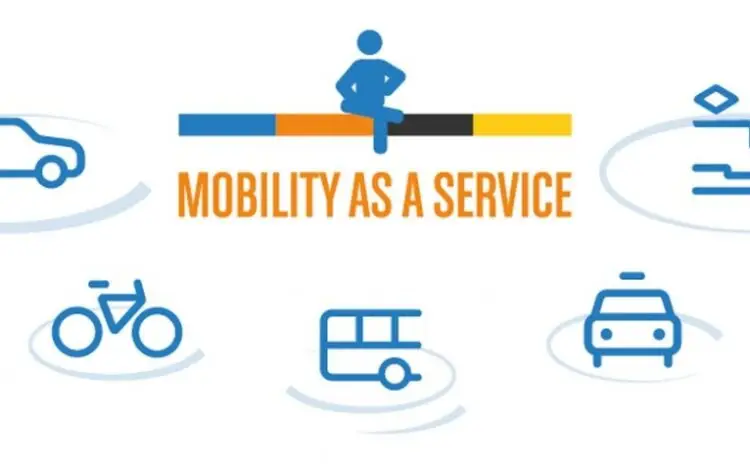MaaS and the changing face of mobility

As congestion, high costs and environmental concerns make personal car ownership in cities an increasingly frustrating experience, and as technology begins to offer more attractive alternatives, we are seeing a shift away from individual modes of transport towards alternative mobility solutions that are consumed as a service.
The shift towards Mobility as a Service (MaaS) comes on the back of changing public perceptions, with people increasingly viewing transport as something that they purchase upon demand and as a personalised mobility experience. This trend is underpinned by new mobility service providers such as ride-sharing and e-hailing services, bike- and car-sharing programmes, as well as on-demand bus services.
ERTICO, a private-public partnership of 120 members from the mobility sector, works toward the development of a pan-European MaaS service to ensure the seamless use of mobility in Europe. With this aim in mind, ERTICO has gathered 45 companies and organisations in one Innovation Platform to work towards making seamless mobility a reality.
The key concept behind MaaS is that it combines public, private and shared transport modes to provide multimodal, integrated and digital mobility solutions for people and goods based on their travel needs. The benefits of this are manifold and far-reaching. By removing hassle and providing choices in planning end-to-end journeys, MaaS allows consumers to travel in a way that suits them best. What’s more, as it integrates a number of different transport modes, MaaS solutions can potentially limit the number of vehicles on the roads and help reduce congestion and pollution in cities. One concern voiced about third-party transport services is that they will have a detrimental impact on traditional public transit. However, this is a misconception: by removing the first/last mile barrier and by more efficiently serving routes that typically require a higher level of public transit subsidy, complementary mobility solutions can increase the coverage and attractiveness of traditional transit services. MaaS can also ease the pressure on networks through more effective use of the existing infrastructure and the creation of economies of scale.
“The real beauty of Mobility as a Service is that it is now the end-user, the passenger, who decides. For the first time in the history of transport, it is not the user who should adapt his / her mobility behaviour based on the supply, but instead there are services responding to our actual mobility needs – and not only those of an anonymous average user. This is enabled by advanced technical solutions and synergetic co-existence of innovative and established transport services. By combining various transport services we can provide attractive mobility options also for those whose needs haven’t been fulfilled by traditional public transit services. Integration here is the key word,” says Piia Karjalainen, coordinator of the MaaS Alliance at ERTICO – ITS Europe.
MaaS is made possible by combining transport services from public, private and shared transport providers through a common access point that allows travellers to create and manage their trips and pay for all of the different transport modes used from a single account.
MinRejseplan
One such access point is the new multi-modal MinRejseplan app, which is a new generation of the app known as Rejseplanen (JourneyPlanner). The MinRejseplan app allows travellers to plan their journey by using a range of transport and mobility modes, from trains, buses and the Metro, to city bikes, taxis, carpooling and car sharing.
By extending the current version of Rejseplanen’s systems and functionality, MinRejseplan provides a better choice between the various means of transportation and, as a completely new feature, it integrates both public and private mobility modes. In this way, it makes it easier for travellers to select green, mass modes of transportation.
MaaS in focus at ITS World Congress
The app will be available for download in the App Store and from Google Play from September 2018, right before the opening of the ITS World Congress and will be tested by delegates during the Congress week. In fact, MinRejseplan is a demonstration project at the Congress, and Copenhageners may get to keep the app if the test is a success and financing is found.
MaaS is one of the key topics at this year’s ITS World Congress, which will run from 17 to 21 September 2018 at the Bella Centre in Copenhagen. ITS is the world’s largest international congress for intelligent transport systems (ITS) and, this year the Congress expects to welcome more than 4,000 delegates, 10,000 attendees and 400 exhibitors from around the world.
There will be plenty of sessions focussing on MaaS at ITS World Congress 2018. Highlights include:
PL02 Ensuring Integrate Mobility Services
ES05 MaaS: Seamless and Effortless Mobility
ES02 Putting Citizens First in Mobility Design
SIS75 Dragon’s Den – MaaS Service Promise and the Future of Public Transport
For the full programme of the please click here, and for more information about the ITS World Congress 2018, please visit www.itsworldcongress.com.




